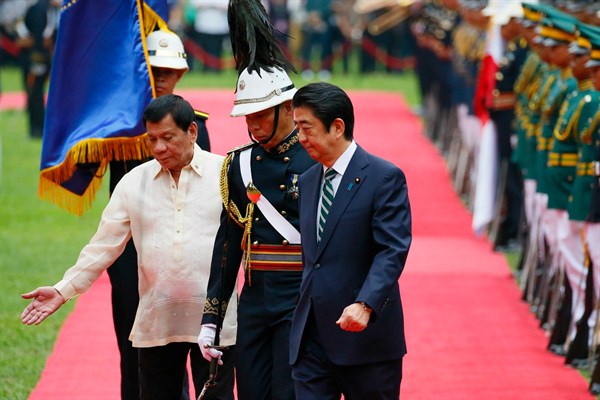While several foreign leaders, including U.S. President Donald Trump, were paying their first visit to the Philippines under President Rodrigo Duterte in November for this year’s ASEAN Summit, Japanese Prime Minister Shinzo Abe was making his second trip there in under a year. And it came just a few weeks after Duterte’s own high-profile visit to Tokyo.
Japan has emerged as the Philippines’ most robust bilateral relationship under Duterte’s presidency so far—so much so that he has begun calling this a “golden age” in their strategic partnership. But even with that progress and optimism, there are still key strategic questions that, if left unresolved, could complicate and limit relations between Manila and Tokyo during the remainder of Duterte’s tenure.
Japan and the Philippines’ close ties go back decades and have come a long way since the Japanese occupation of the Philippines and much of Southeast Asia during World War II, which marred Tokyo’s image in the region after the war. The Philippines later served as a key outlet for Japan to mend that image and gradually reset regional ties with a mixture of economic and security assistance, along with business and cultural links. Indeed, it was in Manila in 1977 that former Japanese Prime Minister Takeo Fukuda delivered a major address signaling a new approach to ties between Tokyo and Southeast Asian nations, which later became known as the Fukuda Doctrine. His declaration that Japan would both prioritize mending ties while also taking a higher profile role in the region has underpinned Japanese foreign policy there ever since.

